The Heraklion Museum is located several blocks from the port of Heraklion, Krete, and is easily accessed via tour bus or taxi. The museum is not large but it is very comfortable and the artifacts and art pieces are nicely displayed.
The museum staff is knowledgeable and friendly ... most of the exhibits may be photographed but flash photography is forbidden.
Don't let the size of the museum fool you ... there is plenty to see so don't be in a hurry. There are several sandwich shops and nice restaurants nearby as well as gift shops where you can buy replicas of some of the museum's distinctive artifacts.
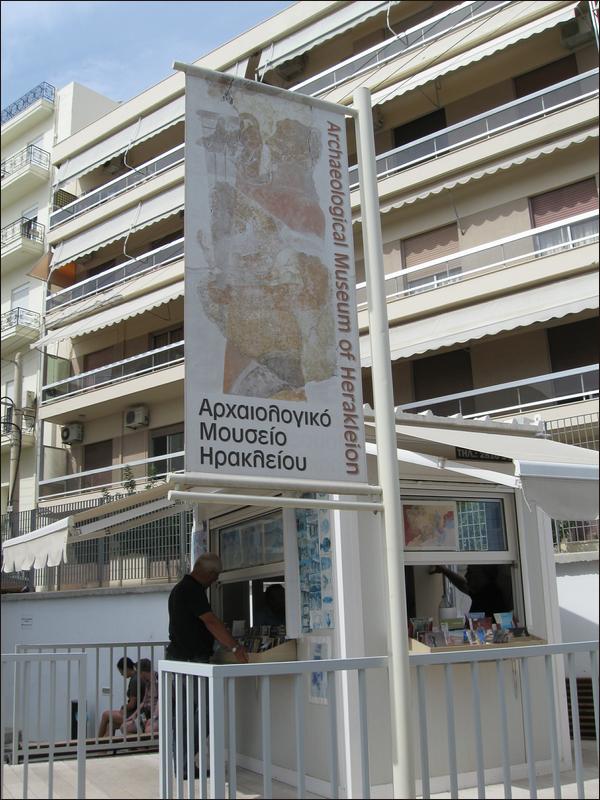
The images provided here are original and copyrighted. You may use these images on your website if they are accompanied by a link to mythagora.com and an unambiguous declaration that the images are copyrighted by M.W. Stewart. All other use of these images is strictly forbidden without written permission.
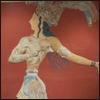 |
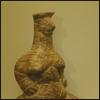 |
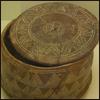 |
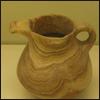 |
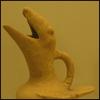 |
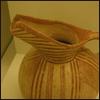 |
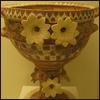 |
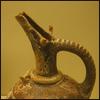 |
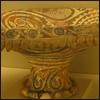 |
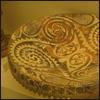 |
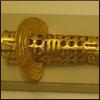 |
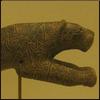 |
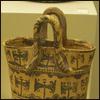 |
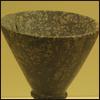 |
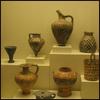 |
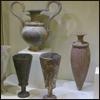 |
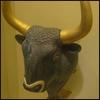 |
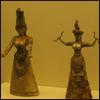 |
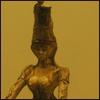 |
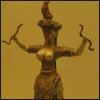 |
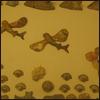 |
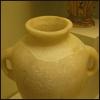 |
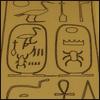 |
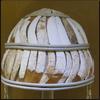 |
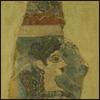 |
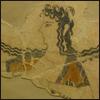 |
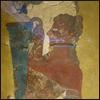 |
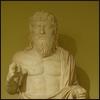 |
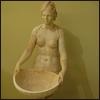 |
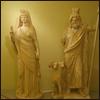 |
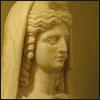 |
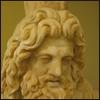 |
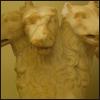 |
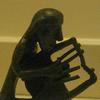 |
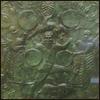 |
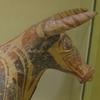 |
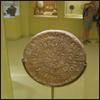 |
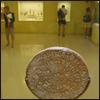 |
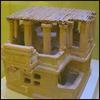 |
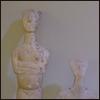 |
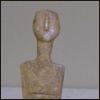 |
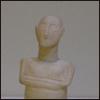 |
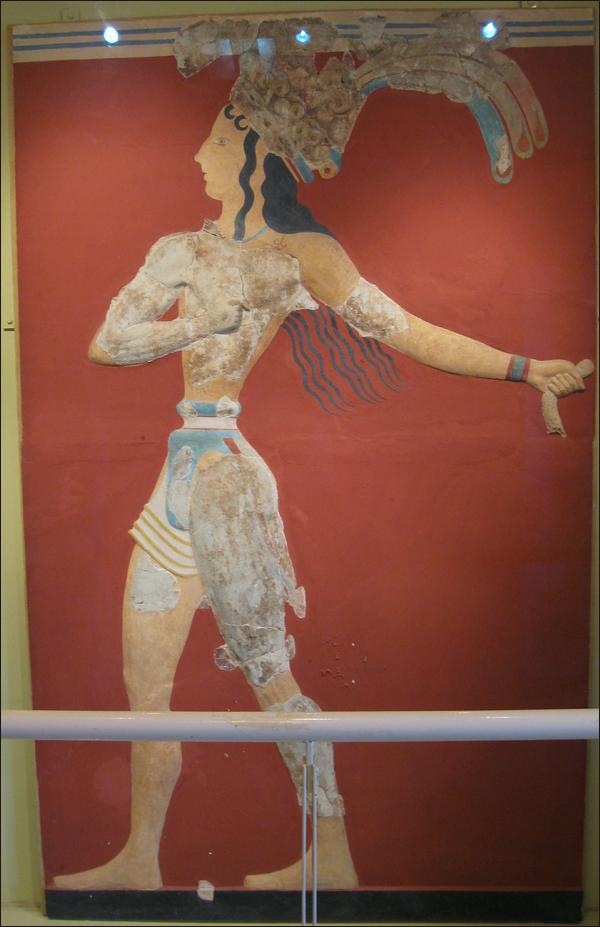
A beautiful fresco from Knossos known as the Prince of the Lilies. His diadem is decorated with lilies and peacock feathers.
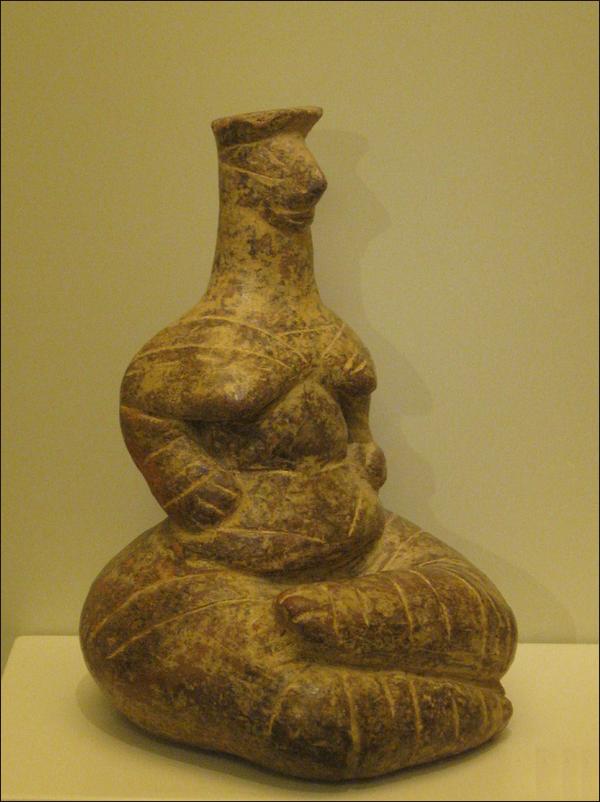
A seated female figurine made of clay.
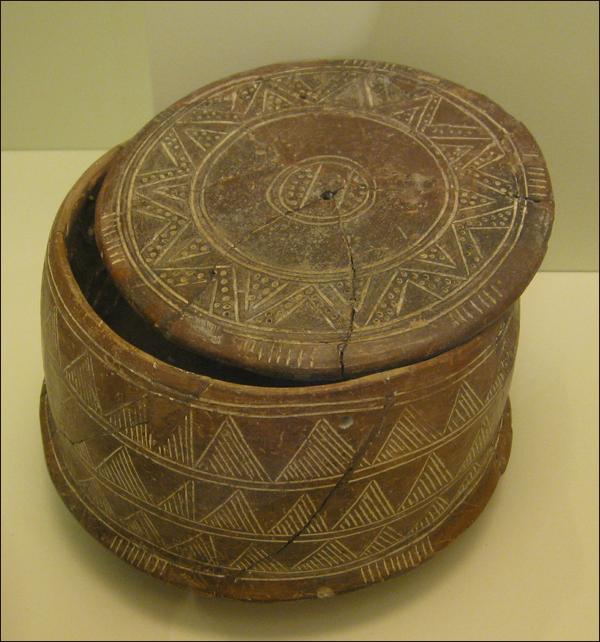
A clay tripod vase from the Pre-Palatial Period of Knossos (3200-2600 BCE).
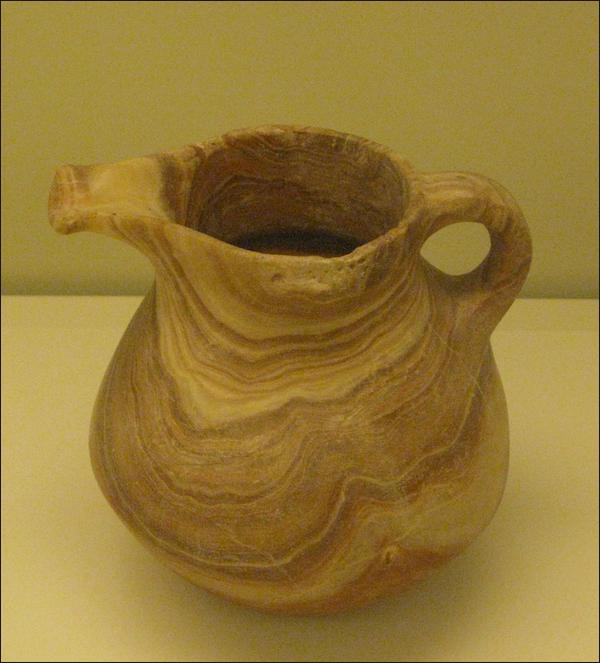
A small alabaster jug from the Pre-Palatial Period of Mokhlos (2500-1800 BCE).
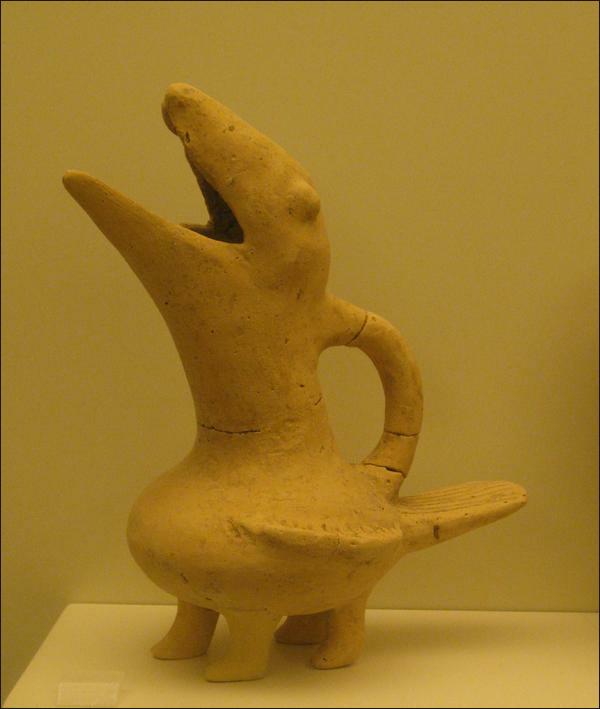
A clay bird-shaped vase from the Pre-Palatial Period of Koumasa, Mesara (2600-2300 BCE).
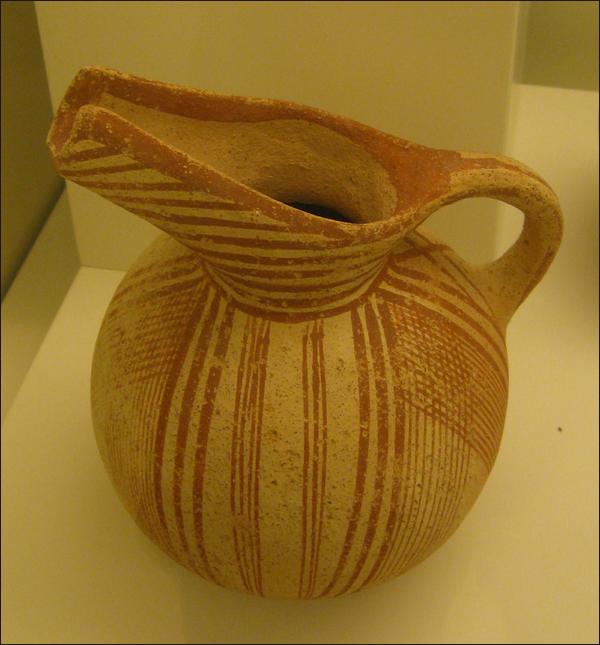
A clay jug in the shape of a gourd from the Pre-Palatial Period of Phaistos (2700-2300 BCE).
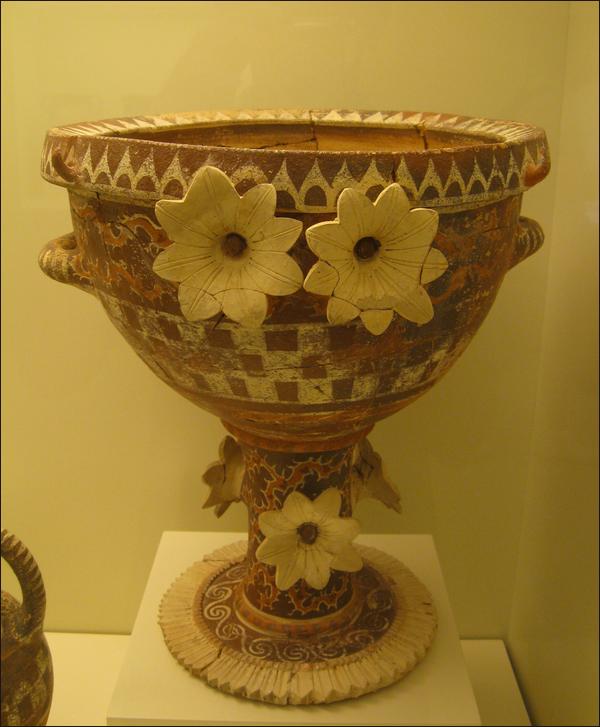
A banquet vessel from the Old-Palatial Period of Phaistos (1800-1700 BCE).
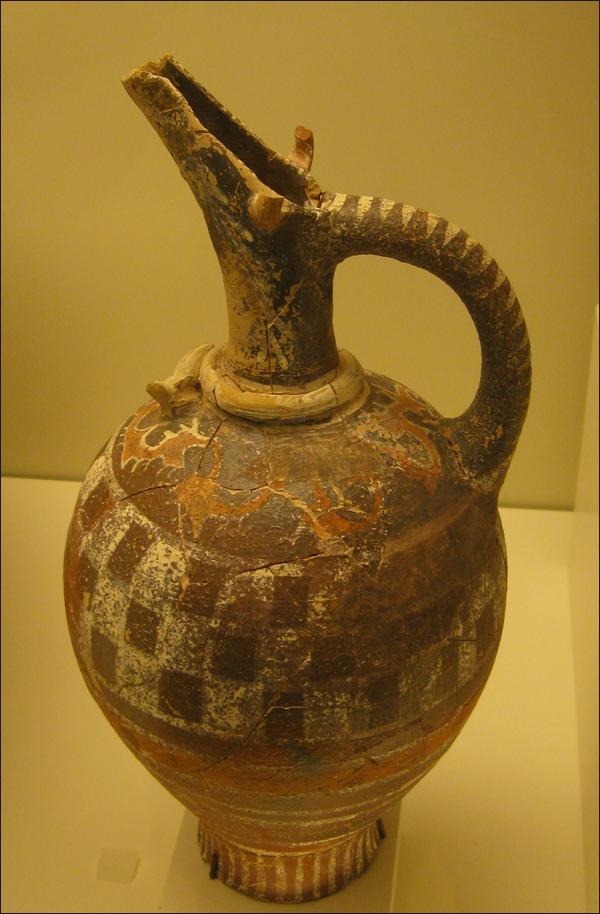
A clay jug with a chessboard design.
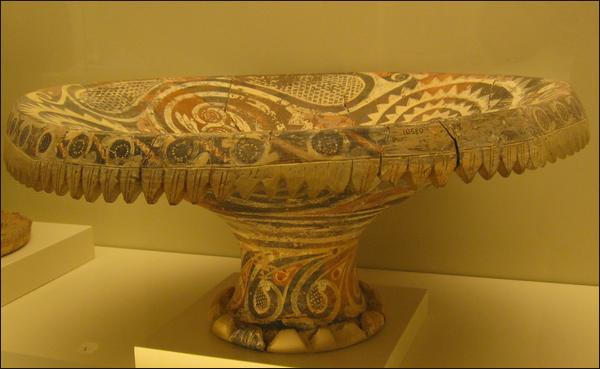
A clay fruit stand.
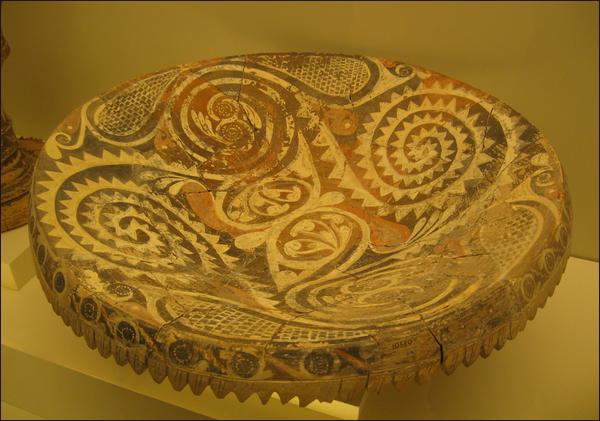
The clay fruit stand, top view.

A bronze dagger.
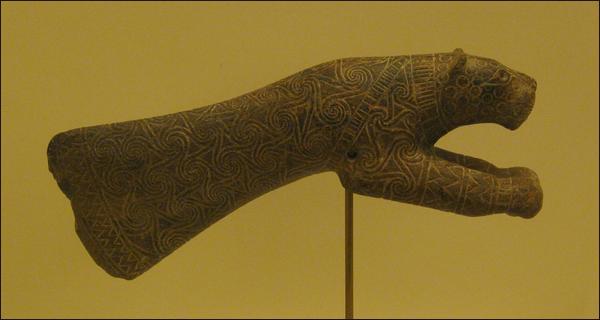
A scepter handle made of green schist in the shape of a panther.
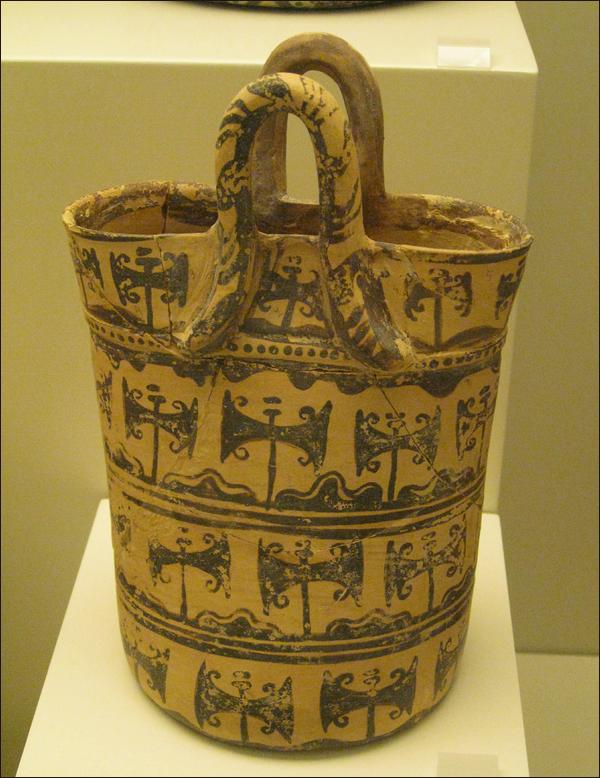
A clay basket-shaped vase decorated with double axes. From Pseira, New-Palace Period (1500-1450 BCE).
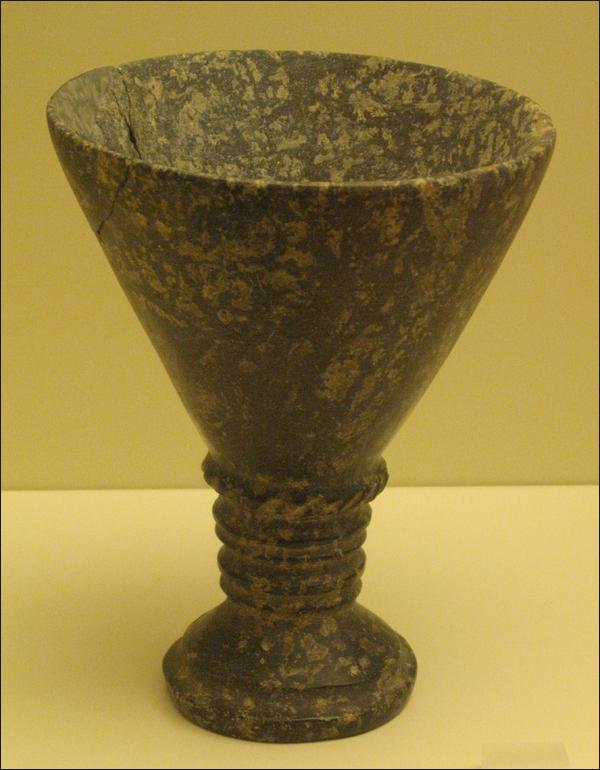
A stone cup, Pseira, New-Palace Period (1600-1500 BCE).

A collection of stone and clay artifacts dating from 1600-1450 BCE.
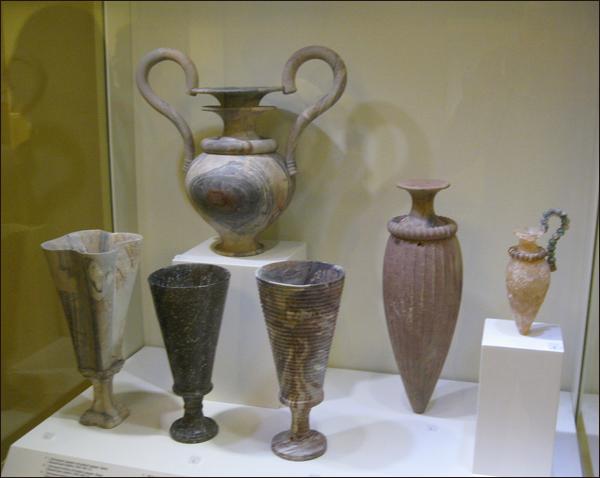
A collection of marble vessels dating from 1500-1450 BCE.
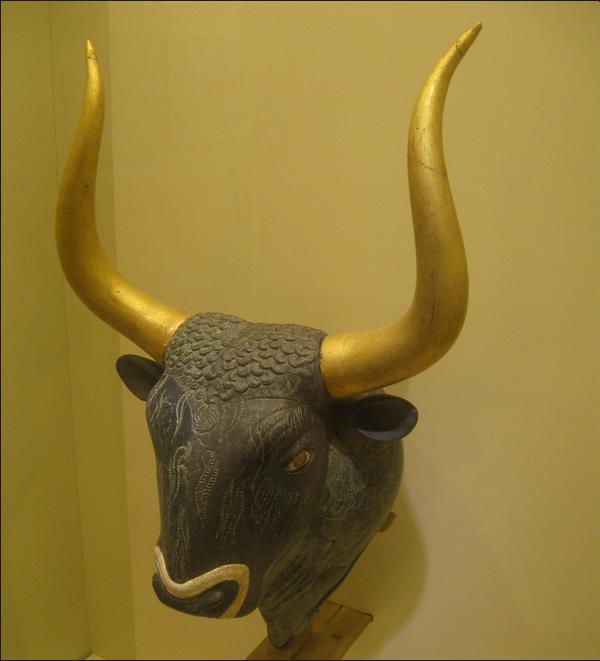
A rhyton (libation cup) in the shape of a bull. Knossos New-Palace Period (1600-1500 BCE).
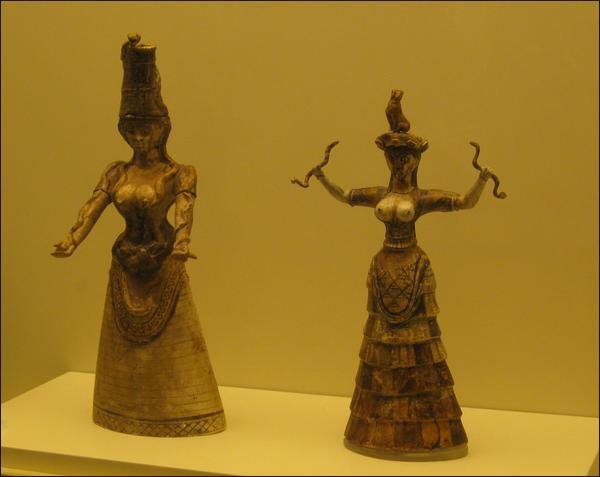
Faience Snake-Goddess figurines, Knossos New-Palace Period (1600 BCE).
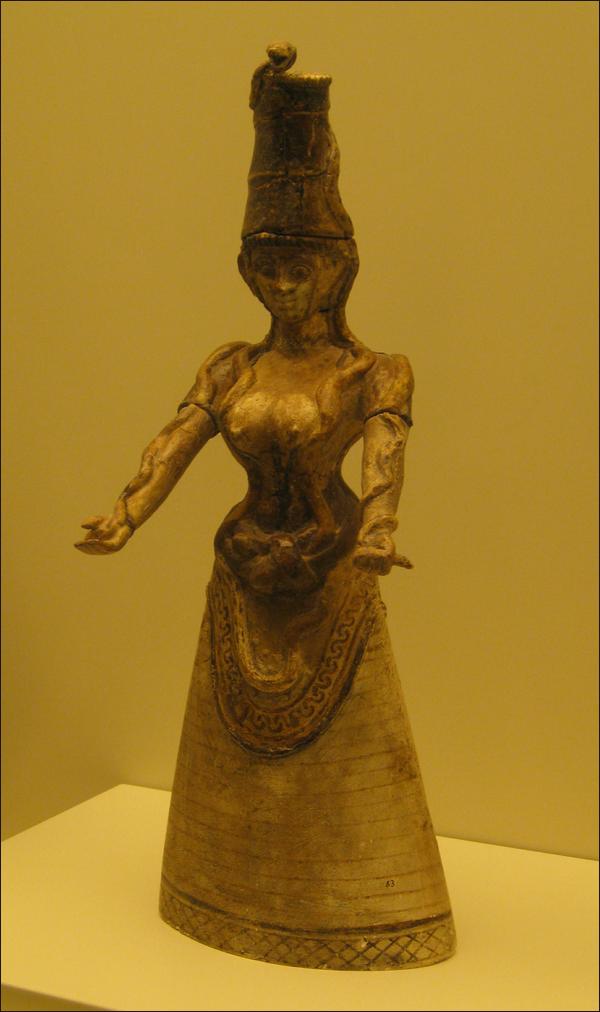
Snake-Goddess (close-up).
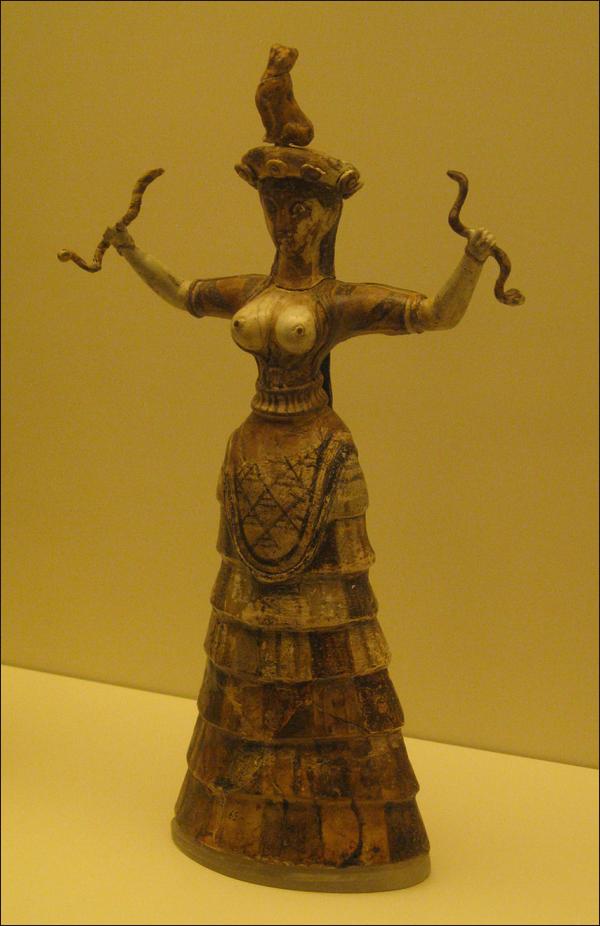
Snake-Goddess (close-up).
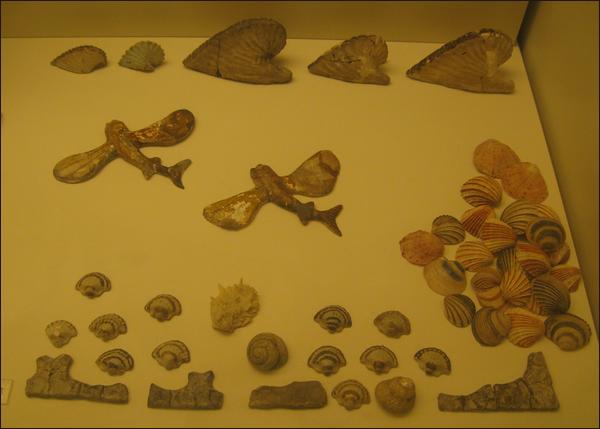
Various faience models, Knossos New-Palace Period (1600 BCE).
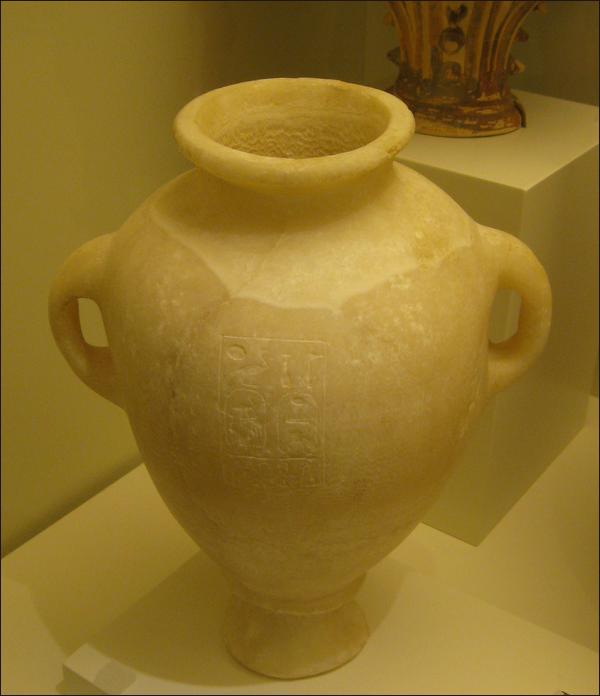
Egyptian alabaster amphora with an inscription to Tuthmosis III. Katsambas, Final-Palatial Period (1450-1400 BCE).
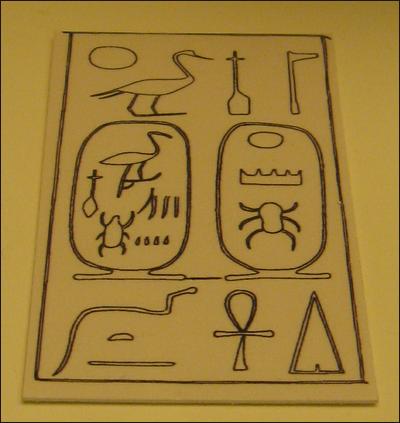
The inscription on the above amphora.
The good god Men-Heper-Re
The son of the sun Tuthmosis
Beautiful in his transformations
Endowed with life forever
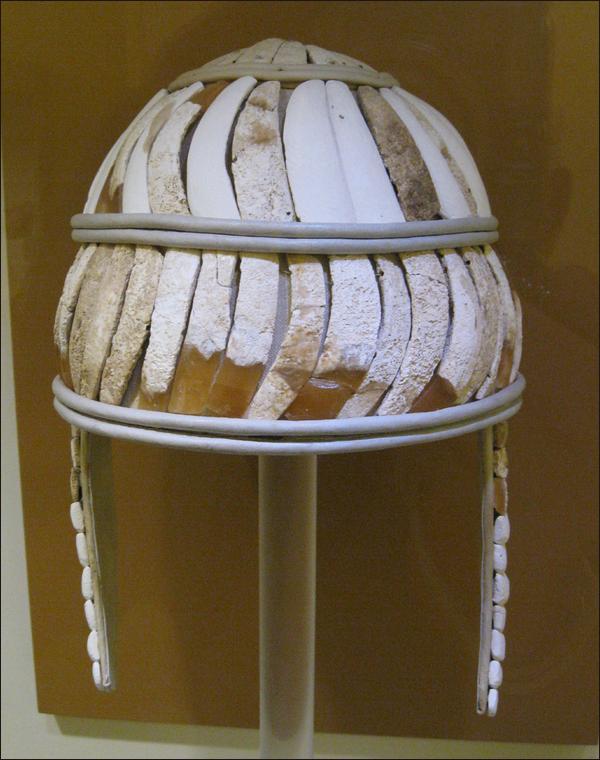
Helmet made of boar's tusks, Knossos, Final-Palatial Period (1450-1400 BCE).
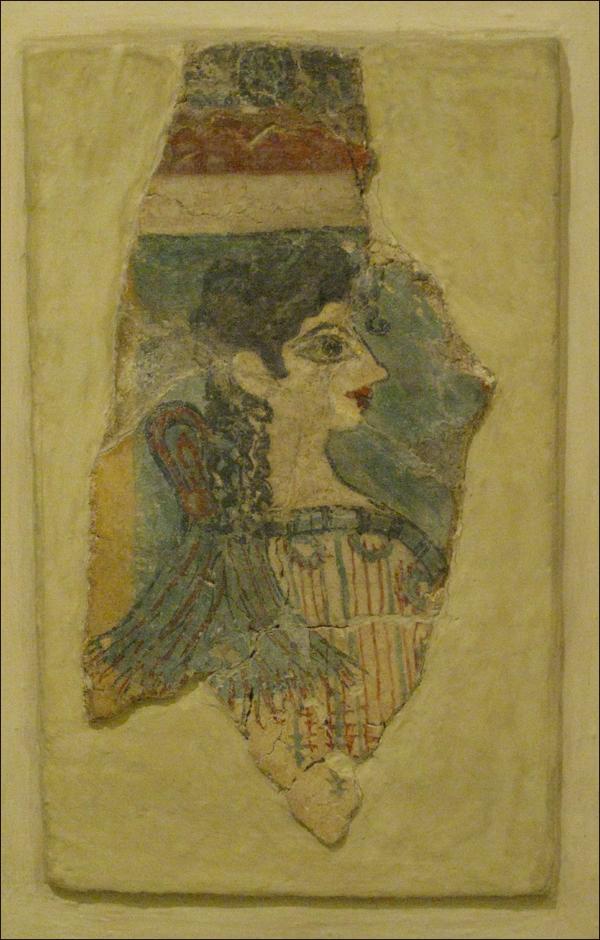
A fragment of the Campstool Fresco showing a woman at a banquet. Knossos, Final-Palatial Period (1400-1350 BCE)
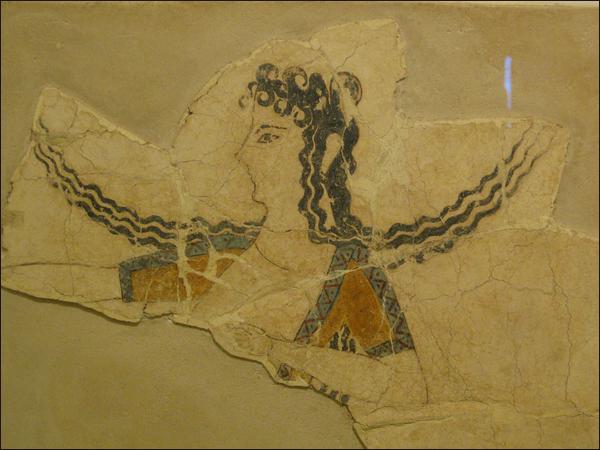
Fresco of a dancing woman. Knossos, Final-Palatial Period (1400-1350 BCE)
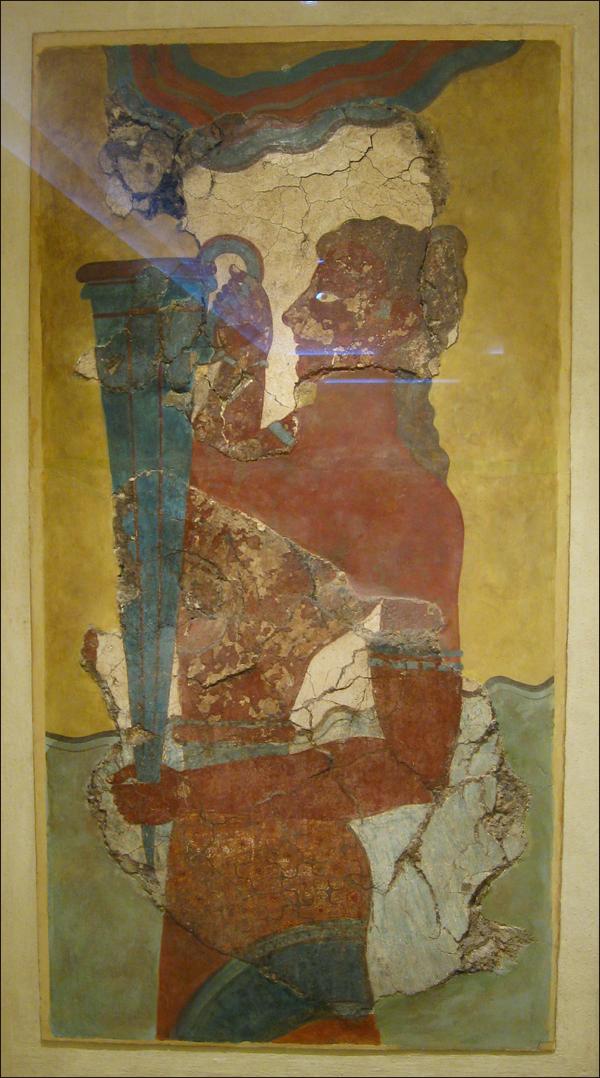
The Cup Bearer Fresco. Knossos, New-Palatial Period (1500-1450 BCE)
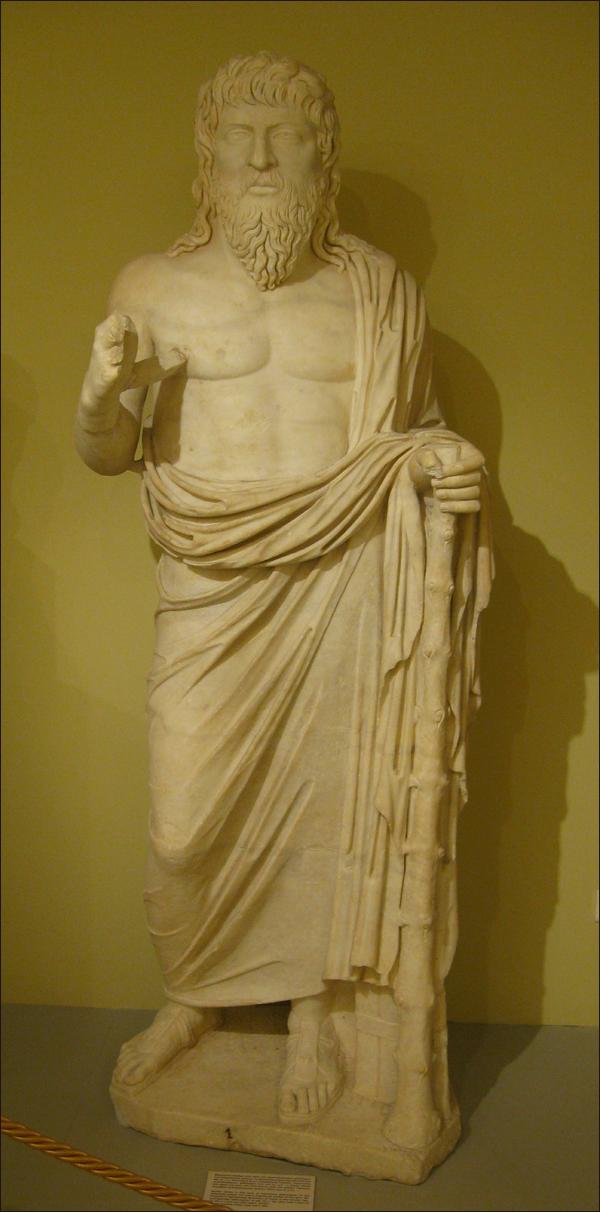
A marble statue of (perhaps) the philosopher Apollonius of Tyana. Gortyn, Roman (late second century CE)
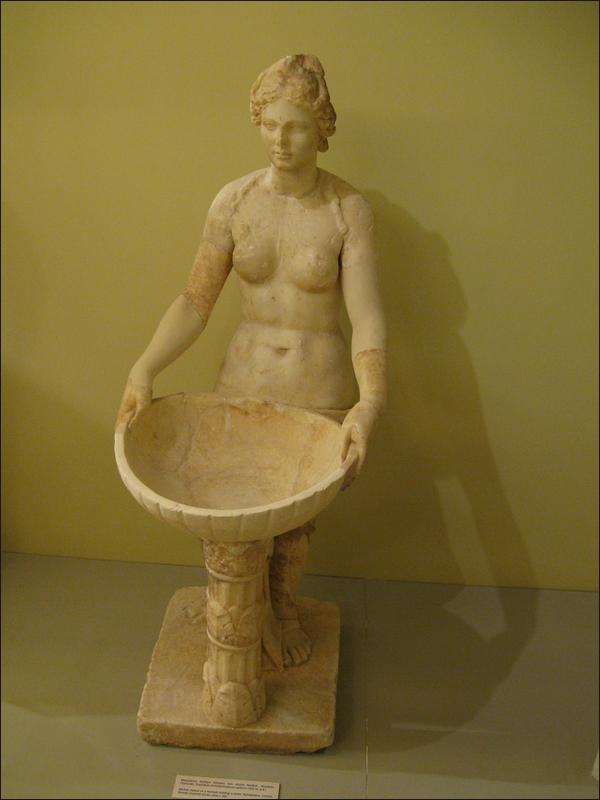
A marble statue of a Nymph holding a bowl. Gortyn, Roman (late second century CE)
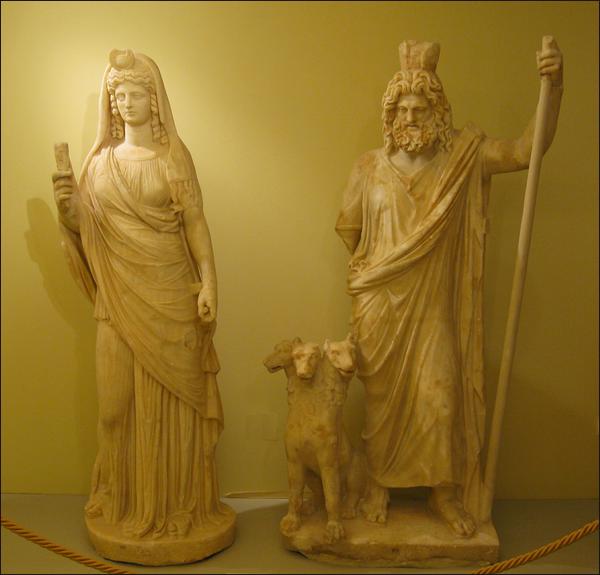
Marble statues from the Temple of Isis-Persephone with Zeus-Serapis as Plouto and the hound, Kerberos. Gortyn, Roman (180-190 CE)
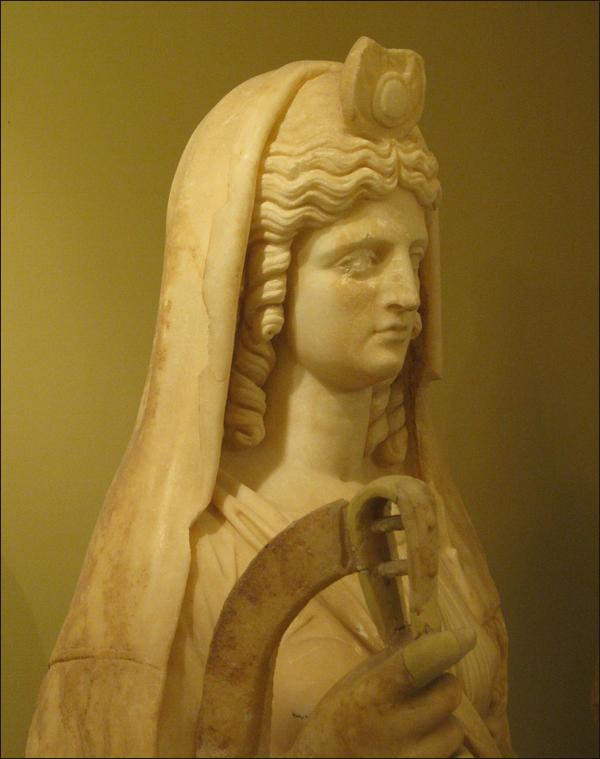
Close-up of the above marble statue of Isis-Persephone.
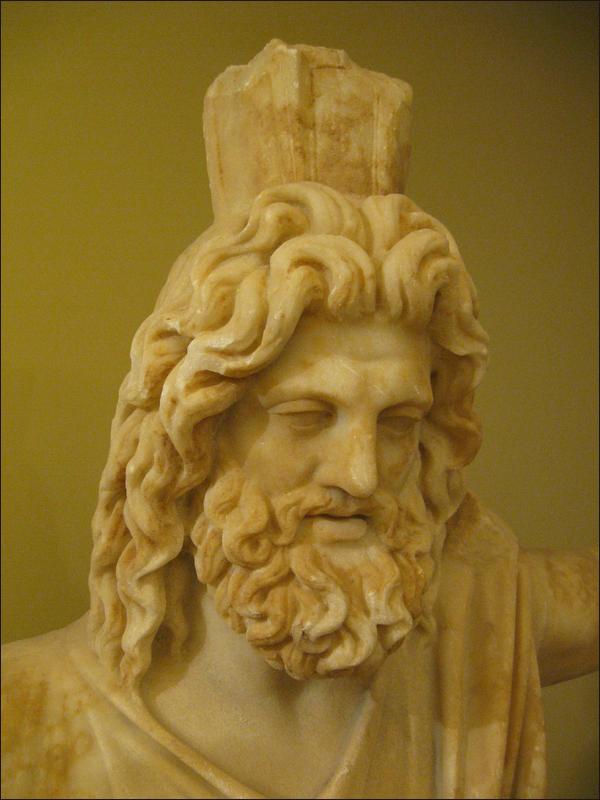
Close-up of the above marble statue of Zeus-Serapis as Plouto.
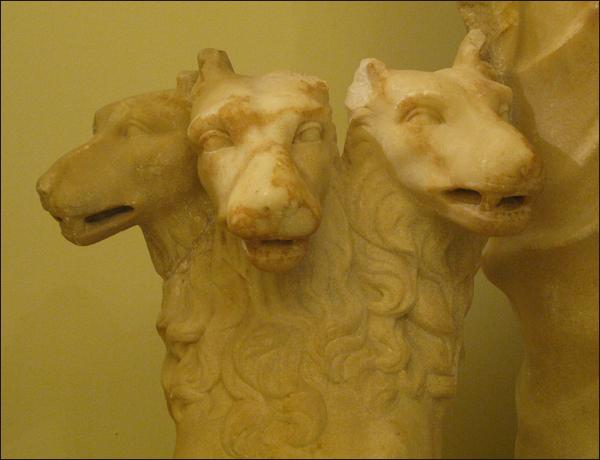
Close-up of the above marble statue of the three-headed Kerberos.
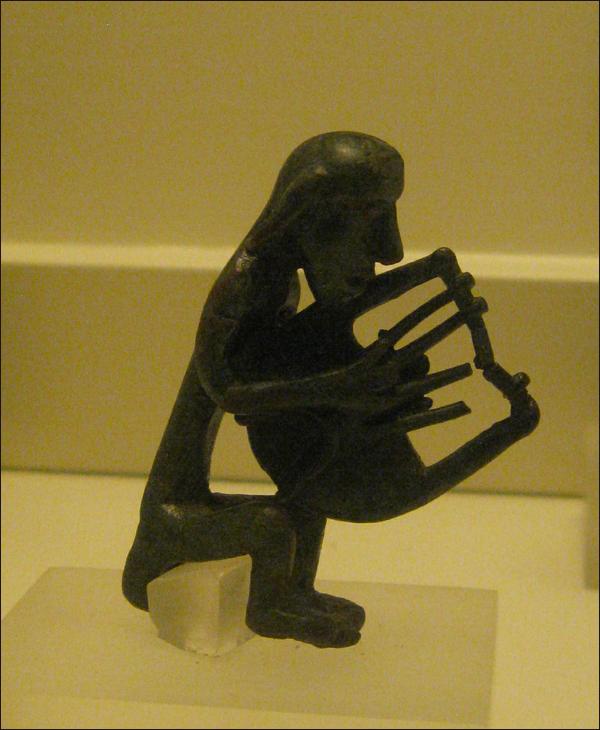
Bronze figurine of a lyre player (900-800 BCE).

Bronze drum which might depict Zeus and the Kouretes of the Idaean Cave on Krete. Seventh century BCE
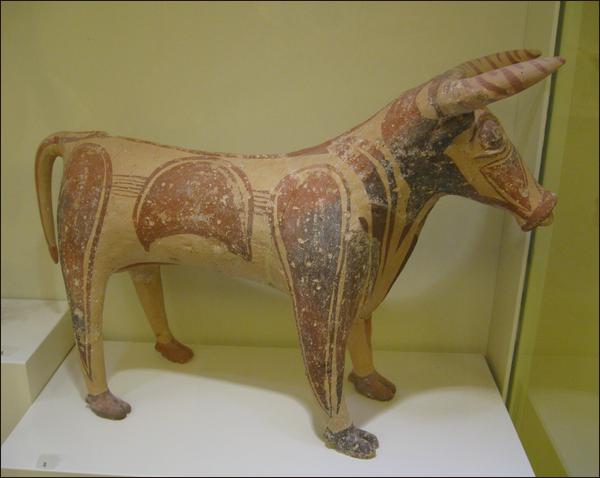
Clay bull figurine. Phaistos, Post-Palatial Period (1200-1000 BCE)
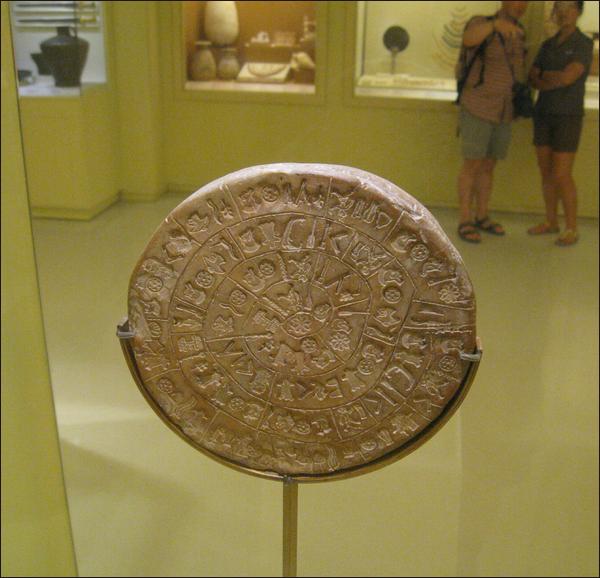
The Phaistos Disk, made of clay and adorned with unknown hieroglyphic symbols on both sides. Phaistos, New-Palatial Period (1600-1450 BCE)
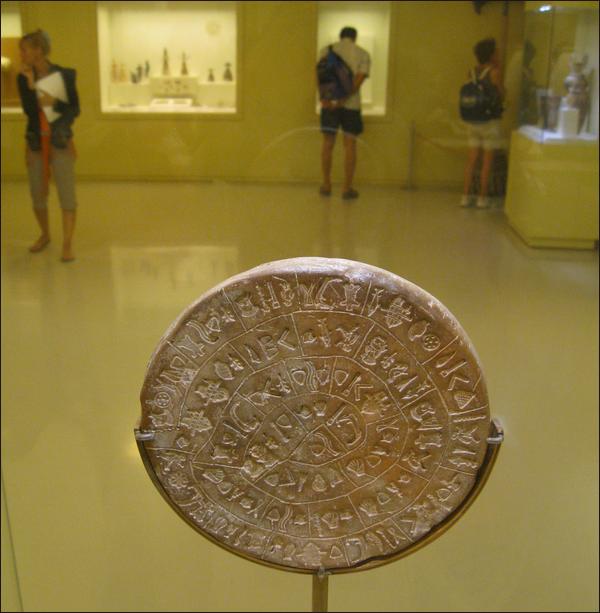
The Phaistos Disk, made of clay and adorned with unknown hieroglyphic symbols on both sides. Phaistos, New-Palatial Period (1600-1450 BCE)
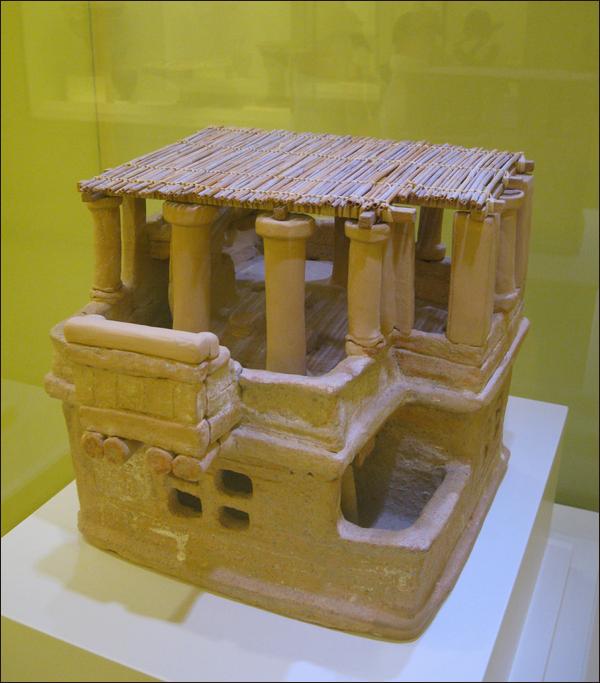
A clay model of a Minoan house.
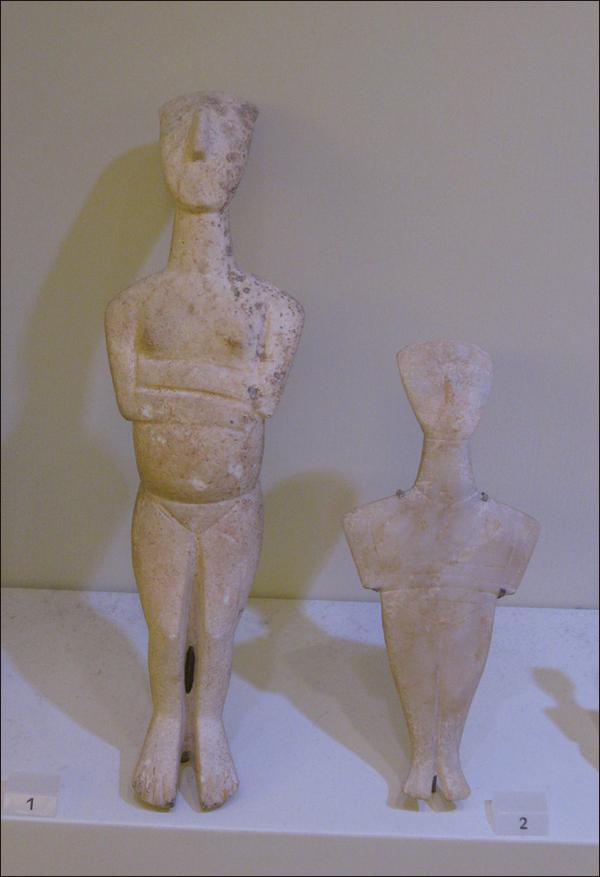
Two marble Cycladic figurines. Pre-Palatial Period (2500-2300 BCE)
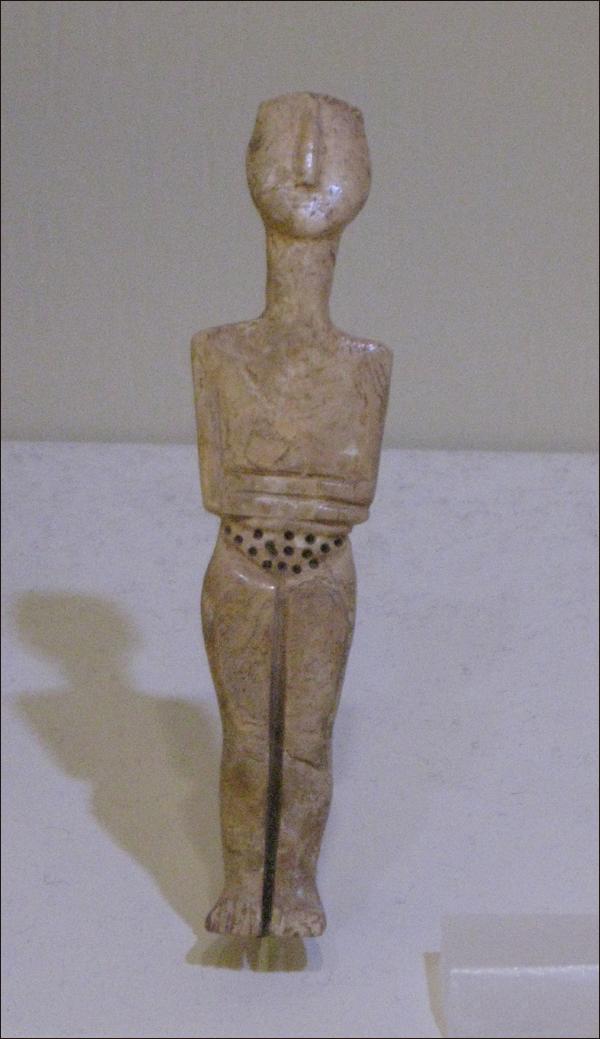
Ivory Cycladic female figurine. Pre-Palatial Period (2500-2300 BCE)
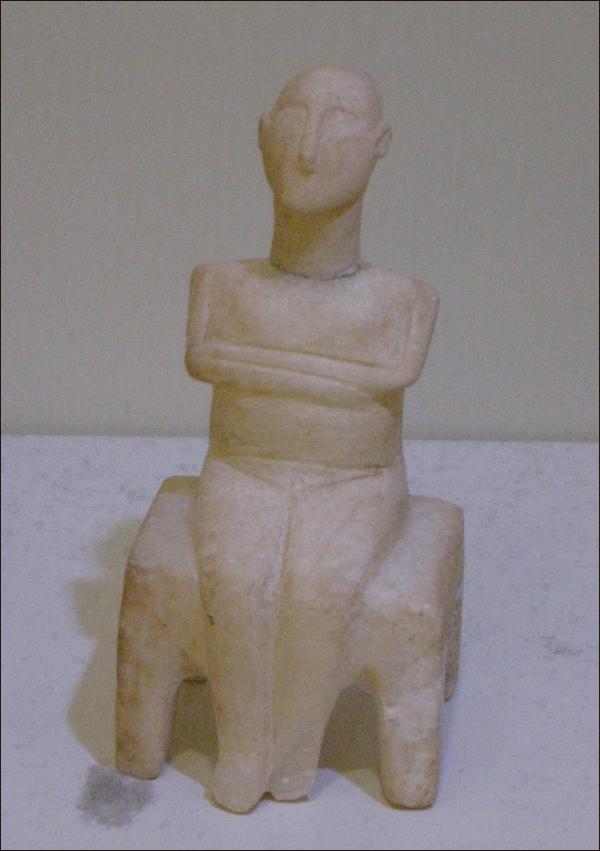
Seated marble Cycladic figurine. Pre-Palatial Period (2500-2300 BCE)